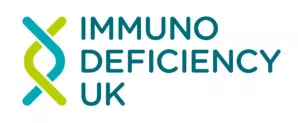The first step the manufacturers take is to get to know the blood donors really well. Manufacturers insist that their donors donate regularly. Each time a donor attends the blood centre they are asked a lot of questions, ranging from their sex lives to any recent travel. They then donate the blood as well as having a series of blood tests to make sure they don’t have an infection. The blood is not released for processing until the blood tests have come back negative.
The second step is that the plasma is treated in a few different ways to get rid of infection. Depending on the manufacturer, the plasma will get a combination of heat treatment (pasteurisation), addition of solvent detergent, and nano-filtration with or without UV light treatment.
Donor centres and immunoglobulin manufacturers have very high standards for minimising the risk of infection getting into the immunoglobulin supply. Donor centres and manufacturers are inspected regularly and will be closed down if there is any hint of a problem.
A final important safety step is carried out by immunologists, who either do annual hepatitis checks or save a sample of blood for infection testing. You will also be kept on the same immunoglobulin product once you have started. It is through this kind of surveillance that we can be so confident that immunoglobulin and its administration is as safe as possible.





